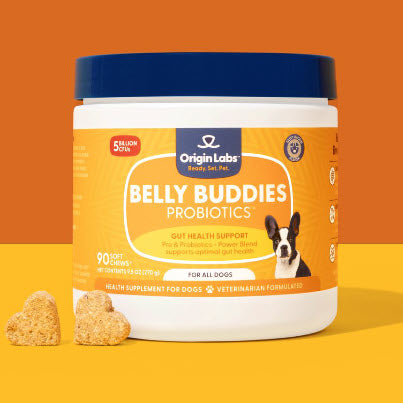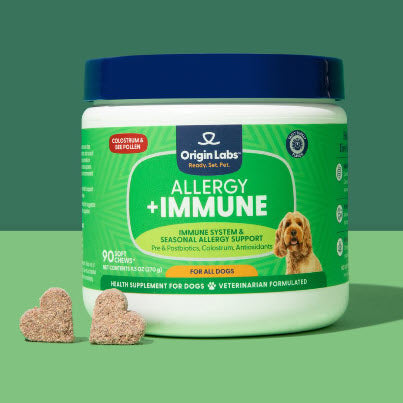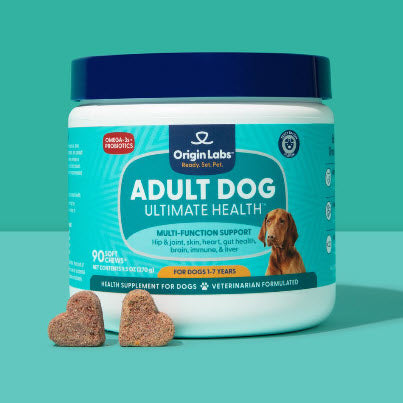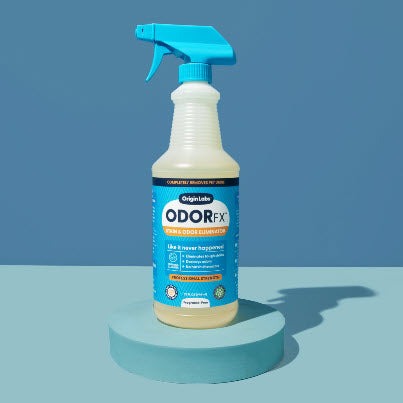Introduction
Understanding what dogs can and cannot eat is crucial for their health and well-being. As pet owners, we often share our favorite foods with our furry friends, but it's important to know which foods are safe and which can pose risks. This guide aims to answer the question: can dogs eat mac and cheese?
Mac and cheese is a beloved comfort food, but its suitability for dogs is questionable. Dogs have different dietary needs compared to humans, and some ingredients in mac and cheese could be harmful. This article will explore the potential risks associated with feeding mac and cheese to dogs, discuss common health issues that may arise, and provide safer alternatives.
For those looking to provide the best support for their pets, consider incorporating health supplements tailored to adult dogs or growing puppies. These supplements, such as Ultimate Health chews, are specifically formulated to meet the unique needs of dogs at different life stages.
The Risks of Feeding Dogs Mac and Cheese
Overview of the Nutritional Content of Mac and Cheese
Mac and cheese, a beloved comfort food for many, contains a mix of pasta, cheese, butter, and milk. While delicious for humans, its nutritional content is not ideal for dogs. Key components include:
- High Fat Content: Cheese and butter contribute significantly to the fat levels.
- Carbohydrates: The pasta adds a heavy dose of carbs.
- Dairy Products: Milk and cheese introduce lactose, which many dogs struggle to digest.
These elements combine to create a meal that's rich in calories but not necessarily in essential nutrients for dogs.
Potential Health Issues Caused by Mac and Cheese Consumption in Dogs
Feeding mac and cheese to dogs can lead to various health issues. Some potential problems include:
- Obesity: The high-calorie content from fats and carbs can contribute to weight gain.
- Pancreatitis: An inflammation of the pancreas often triggered by fatty foods. According to a study on diet and chronic pancreatitis, regular consumption of mac and cheese might increase the risk of chronic pancreatitis in dogs.
- Gastrointestinal Upset: Diarrhea, vomiting, and stomach pain due to lactose intolerance or high-fat content.
Discussion on the High Fat Content and Spices That May Be Harmful to Dogs
High Fat Foods for Dogs
High-fat foods like mac and cheese are problematic for dogs. Their digestive systems are not designed to handle large amounts of fat. Some effects include:
- Increased Cholesterol Levels: Similar to humans, dogs can develop cholesterol-related issues.
- Heart Disease: Over time, excessive fat intake can lead to heart problems.
Spices to Avoid for Dogs
Many recipes for mac and cheese include spices such as garlic powder, onion powder, or paprika. These spices can be particularly harmful:
- Garlic and Onion Powder: Even in small quantities, these can cause damage to red blood cells leading to anemia.
- Paprika: This spice can irritate a dog's digestive system causing discomfort.
It's crucial to note that even seemingly harmless seasonings can have adverse effects on canine health.
Exploring the effects of mac and cheese on dogs reminds us that while tempting, sharing human food isn't always safe. For those seeking healthier alternatives tailored specifically for their pets' needs, options like senior dog food supplements offer balanced support without the risks associated with high-fat human foods.
In understanding these risks, pet owners can make informed decisions that prioritize their dog's health.
Digestive Problems Associated with Mac and Cheese Consumption
Feeding mac and cheese to dogs can potentially lead to a variety of digestive issues due to its composition. Mac and cheese is typically high in fat, rich in dairy, and often contains spices or additives that are not suitable for canine consumption.
Explanation of Why Mac and Cheese Can Lead to Digestive Problems in Dogs
1. High Fat Content
Dogs have a different digestive system compared to humans, and high-fat foods can be particularly challenging. Consuming large quantities of fatty food like mac and cheese can overwhelm a dog’s pancreas, leading to pancreatitis—a serious and painful condition that requires immediate veterinary attention.
2. Dairy Products
Many dogs are lactose intolerant, meaning they lack the enzyme lactase needed to break down lactose found in dairy products. The cheese used in mac and cheese can cause gastrointestinal upset, including diarrhea, gas, and bloating.
3. Spices and Additives
Ingredients commonly found in mac and cheese recipes, such as garlic powder, onion powder, and various spices, can be toxic to dogs. Even small amounts can cause severe health issues.
Symptoms of Digestive Distress in Dogs After Consuming Mac and Cheese
After ingesting mac and cheese, dogs may exhibit several symptoms indicating digestive distress:
- Vomiting: This is one of the most immediate signs that something is wrong. If your dog starts vomiting after consuming mac and cheese, it’s crucial to monitor them closely.
- Diarrhea: Loose stools or frequent bowel movements can occur as the dog’s digestive system struggles to process the high fat content and dairy.
- Excessive Gas: Bloating or flatulence may develop due to the inability to properly digest lactose from the cheese.
- Loss of Appetite: Dogs experiencing discomfort or pain from digestive issues may refuse to eat their regular meals.
- Lethargy: A general sense of weakness or fatigue could indicate that your dog’s body is struggling to cope with the ingestion of unsuitable food.
- Abdominal Pain: Signs such as whining when touched on the belly or an unusually tender abdomen could point towards pancreatitis or other serious conditions.
When to Consult a Veterinarian
If your dog has consumed mac and cheese and starts showing any signs of distress, it’s important to know when to seek professional help.
- Immediate Symptoms: If you notice symptoms like vomiting, diarrhea, or excessive gas shortly after your dog has eaten mac and cheese, it’s wise to consult your vet for dogs eating mac and cheese-related incidents. Early intervention can help mitigate more severe complications.
- Persistent Symptoms: Should symptoms persist for more than 24 hours or worsen over time, this could indicate a more serious underlying issue such as pancreatitis. Pancreatitis in dogs requires prompt veterinary care due to its potential severity.
- Severe Reactions: In cases where your dog exhibits extreme lethargy, significant abdominal pain, or continuous vomiting/diarrhea, immediate veterinary attention is required. These could be signs of severe digestive upset or toxic reaction.
Monitoring your pet closely after they consume something outside their regular diet is essential for their health. Consulting a veterinarian ensures that any adverse reactions are managed effectively while safeguarding your dog's well-being.
Understanding these potential risks highlights why it's best to avoid feeding mac and cheese to dogs altogether.
Allergic Reactions to Mac and Cheese in Dogs
Mac and cheese is a beloved comfort food for many, but it can spell trouble for our canine companions. While cheese itself can be a culprit, it's often the other ingredients that pose significant risks. Here are some common components found in mac and cheese that might trigger allergic reactions in dogs:
Ingredients in Mac and Cheese That May Cause Allergic Reactions in Dogs
- Dairy Products: Many dogs are lactose intolerant, meaning they have difficulty digesting lactose, a sugar found in dairy products. This intolerance can lead to gastrointestinal upset rather than an allergic reaction.
- Wheat and Gluten: Some dogs have sensitivities or allergies to wheat or gluten, which are common ingredients in pasta.
- Preservatives and Artificial Additives: Store-bought mac and cheese often contains preservatives and artificial flavors that may cause allergic reactions or other health issues.
Common Symptoms of Allergies in Dogs
When dogs have allergic reactions to certain foods, they exhibit specific symptoms. If your dog consumes mac and cheese and displays any of the following signs, it may indicate an allergic reaction:
- Itching and Scratching: Excessive scratching, especially around the face, ears, paws, and belly.
- Skin Irritations: Redness, rashes, or bumps on the skin.
- Gastrointestinal Issues: Vomiting, diarrhea, excessive gas, or bloating.
- Ear Infections: Recurring ear infections or discomfort in the ears.
- Respiratory Problems: Coughing, sneezing, or difficulty breathing.
Importance of Avoiding Certain Ingredients Like Onions and Garlic
Perhaps one of the most critical aspects of mac and cheese for dog owners to consider is the inclusion of onions and garlic. These ingredients are not only potential allergens but are also toxic to dogs.
Onions
Onions contain compounds called thiosulfates which can cause oxidative damage to red blood cells in dogs. This condition is known as hemolytic anemia. Signs of onion toxicity include:
- Weakness
- Vomiting
- Diarrhea
- Breathlessness
- Lethargy
Even small amounts of onion powder can be dangerous as it’s more concentrated than fresh onions.
Garlic
Garlic shares similar toxic properties with onions due to its thiosulfate content. Although garlic tends to be less potent than onions, it can still cause significant health problems when ingested by dogs. Symptoms of garlic toxicity mirror those of onion toxicity:
- Gastrointestinal upset (vomiting/diarrhea)
- Abdominal pain
- Lethargy
- Pale gums
Avoiding these ingredients altogether is essential for ensuring your dog's health.
Key Takeaways
In essence:
- Watch Out for Dairy: Be mindful if your dog is lactose intolerant.
- Beware of Wheat/Gluten: Monitor for sensitivities related to pasta ingredients.
- Avoid Preservatives/Additives: Choose natural treats without artificial components.
- Steer Clear of Onions/Garlic: Both fresh and powdered forms pose severe risks.
By understanding these potential allergens and toxic ingredients within mac and cheese, you can better protect your furry friend from adverse reactions.
Safer Treat Options for Dogs
Introduction to Healthier Alternatives to Mac and Cheese for Treating Dogs
Feeding dogs mac and cheese might seem like a treat, but it can lead to health issues. Opting for healthier alternatives ensures they enjoy snacks without compromising their well-being. Various fruits and vegetables not only provide nutritional benefits but also satisfy your dog's craving for tasty treats.
Benefits of Incorporating Fruits and Vegetables into a Dog's Diet
Incorporating fruits and vegetables into a dog's diet offers numerous advantages:
- Nutritional Value: Packed with essential vitamins, minerals, and antioxidants.
- Low in Calories: Helps maintain a healthy weight.
- Digestive Health: Fiber content promotes better digestion.
- Hydration: High water content aids hydration.
Fruits and vegetables are an excellent way to diversify your dog’s diet while providing vital nutrients.
Specific Examples of Safe Treats
Here are some specific examples of safe treats:
Carrots
Carrots are a fantastic treat for dogs due to their crunchiness and nutritional profile.
- Nutritional Benefits:
- Rich in beta-carotene, which converts to Vitamin A.
- Good source of fiber.
- Low in calories.
Feeding Tip: Offer raw carrot sticks or lightly steamed carrots. Ensure they are cut into bite-sized pieces to prevent choking hazards.
Watermelon
Watermelon is a hydrating treat, especially during hot weather.
- Nutritional Benefits:
- High water content (about 92%).
- Contains vitamins A, B6, and C.
- Low in calories.
Feeding Tip: Remove the seeds and rind before giving watermelon chunks to your dog. Serve in moderation due to its natural sugar content.
Broccoli
Broccoli is another healthy option that many dogs enjoy.
- Nutritional Benefits:
- Packed with fiber.
- Contains Vitamin C and K.
- Low in fat.
Feeding Tip: Serve small pieces of broccoli florets either raw or steamed. Too much broccoli can cause gas, so feed it sparingly.
Bananas
Bananas are a sweet and nutritious treat that dogs often love.
- Nutritional Benefits:
- High in potassium.
- Contains vitamins B6 and C.
- Provides fiber.
Feeding Tip: Slice bananas into small pieces or mash them as a topping on their regular food. Due to their high sugar content, bananas should be given as an occasional treat.
Pumpkin
Pumpkin is particularly beneficial for digestive health.
- Nutritional Benefits:
- High in fiber.
- Rich in vitamins A, E, and C.
- Contains antioxidants.
Feeding Tip: Use plain canned pumpkin (not pumpkin pie filling) or cook fresh pumpkin. Mix a small amount with their regular food or offer it as a standalone treat.
Conclusion
Understanding whether can dogs eat macaroni and cheese is crucial for any responsible pet owner. While the creamy allure of mac n cheese might be tempting to share with your furry friend, it's important to recognize the potential risks involved.
Final Thoughts on Feeding Mac and Cheese to Dogs
Feeding mac & cheese to dogs can lead to several health issues. The high fat content, spices, and dairy components are not suitable for canine digestive systems. Many dogs may experience digestive problems or even allergic reactions due to certain ingredients like onions and garlic often found in various recipes. It's always better to err on the side of caution and avoid giving your dog this popular human dish.
Importance of Understanding a Dog's Dietary Needs
Ensuring your dog's diet is appropriate for their specific needs is essential for their overall health and well-being. A balanced diet helps:
- Maintain healthy weight
- Support digestive health
- Avoid potential allergies
- Promote a long, happy life
Opting for healthier treat alternatives such as carrots, watermelon, broccoli, bananas, and pumpkin can provide nutritional benefits without the risks associated with mac n cheese. Always consult with a veterinarian if you're unsure about what foods are safe for your dog.
Prioritizing your dog's dietary needs ensures they receive all the necessary nutrients while avoiding harmful substances. By making informed choices about what you feed your pet, you contribute significantly to their overall quality of life.
FAQs (Frequently Asked Questions)
Can dogs eat mac and cheese?
No, dogs should not eat mac and cheese as it can lead to potential health issues caused by the high fat content and spices that may be harmful to dogs.
What are the potential health issues caused by mac and cheese consumption in dogs?
Mac and cheese consumption in dogs can lead to digestive problems such as pancreatitis, as well as allergic reactions due to ingredients like onions and garlic.
Why can mac and cheese lead to digestive problems in dogs?
Mac and cheese can lead to digestive problems in dogs due to its high fat content and certain spices that may cause distress. Symptoms of digestive distress in dogs after consuming mac and cheese include vomiting, diarrhea, and abdominal pain.
What are the ingredients in mac and cheese that may cause allergic reactions in dogs?
Ingredients like onions, garlic, and onion powder in mac and cheese may cause allergic reactions in dogs, leading to symptoms such as itching, hives, swelling, or gastrointestinal issues.
What are some safer treat options for dogs?
Healthier alternatives to mac and cheese for treating dogs include fruits and vegetables such as carrots, watermelon, broccoli, bananas, and pumpkin. These options provide benefits for a dog's diet while avoiding potential harmful ingredients.
Can dogs eat macaroni and cheese?
No, it is not recommended for dogs to eat macaroni and cheese due to the potential health risks associated with its high fat content, spices that may be harmful, and ingredients that can cause allergic reactions.








